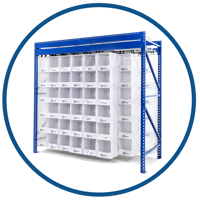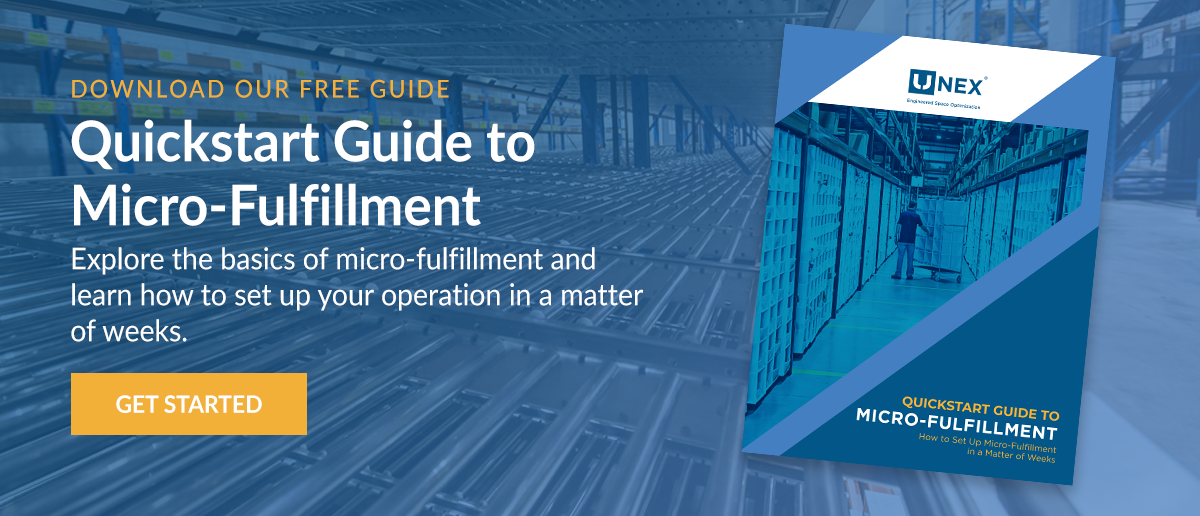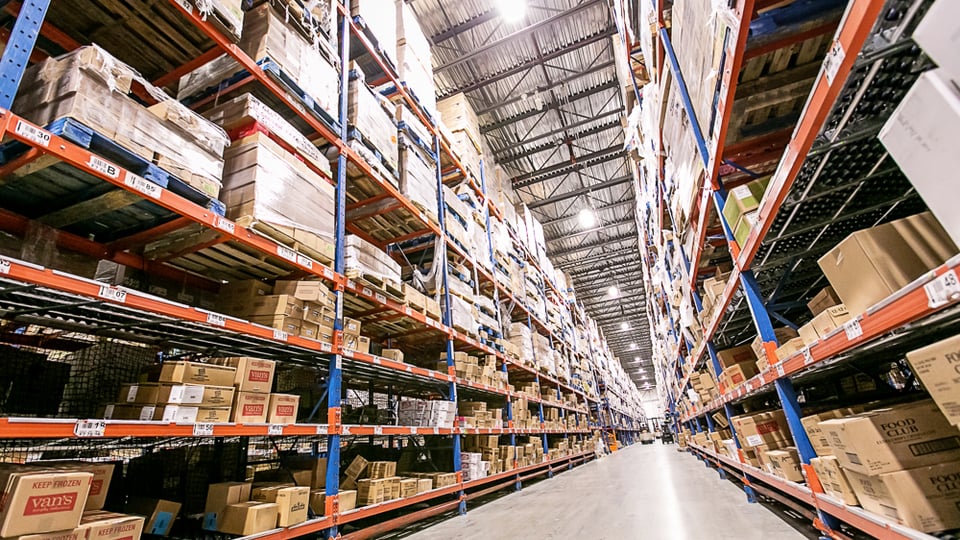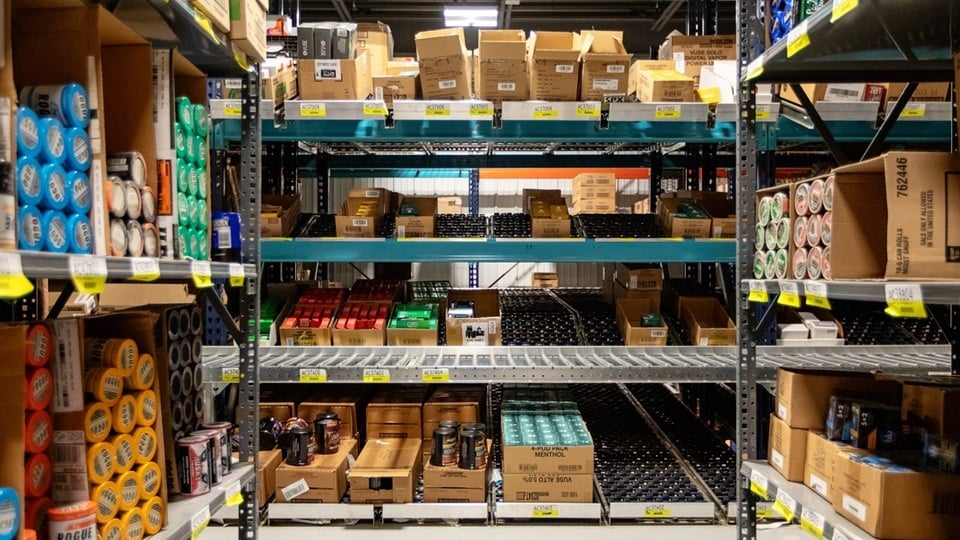Omnichannel Fulfillment: Meeting Shoppers Wherever They Are

Retail is no longer defined by store walls. Today’s shopper expects to browse online, pick up in-store, ship-to-home, or even return through another channel entirely, all with speed and accuracy. This shift in consumer behavior has made omnichannel fulfillment a business-critical strategy.
The stakes are high: customers want their orders fast, accurate, and flexible. If one retailer can’t deliver, they’ll simply shop somewhere else. With eCommerce sales in the U.S. projected to continue growing well past the trillion-dollar mark, the question isn’t whether businesses should adopt omnichannel strategies; it’s how quickly they can do so, and how effectively they can execute.
For success in the omnichannel market, retailers need to know what inventory they have and where it is located, where the order will be fulfilled, and how it will end up in the hands of the consumer. Easy, right? Not even close. Fulfilling orders that originate directly from the online customer is a much different proposition than replenishing brick and mortar stores. Typically merchandise is sent in bulk shipments to the stores to replenish inventory. On the other hand, online order sizes are very small, often a single unit. These orders are then shipped directly to the customer rather than in bulk to the store.
Omnichannel fulfillment requires different fulfillment processes.
The Challenge of Omnichannel Fulfillment
Traditional fulfillment was built for replenishment. Bulk shipments arrived at distribution centers (DCs) and moved out to stores on pallets or in cases. Today, those same facilities must pivot to manage each-picking, where a single online order might include just one SKU, destined directly for a customer’s doorstep.
This change has introduced several hurdles for retailers, 3PLs, and wholesalers:
- Inventory Visibility: Retailers need to know not only what inventory exists, but where it lives across stores, warehouses, and sometimes even supplier networks.
- SKU Proliferation: As product assortments expand, SKU slotting and storage strategies struggle to keep pace.
- Space Constraints: Warehouse facilities designed for bulk shipments often lack the right infrastructure for eCommerce orders.
- Rising Labor Costs: Pickers waste time searching for items or walking long distances in warehouses that aren’t optimized for small-order fulfillment.
- Customer Expectations: Flexible delivery options like BOPIS (buy online, pick up in store) and ship-from-store increase complexity for fulfillment teams.
The result? A costly, inefficient process that threatens margins while risking customer satisfaction.

Core Requirements for Omnichannel Success
To succeed in this environment, order fulfillment operations must evolve. Leading retailers and logistics providers are prioritizing:
1. Flexible Fulfillment Paths
Customers don’t think in terms of “channels," they expect one unified experience whether they order online, in-store, or through a mobile app. To meet this expectation, retailers must design flexible omnichannel fulfillment networks that allow orders to be routed through the most efficient path, whether it’s ship-from-store, BOPIS, curbside pickup, or direct-to-consumer delivery. The ability to pivot between these options on demand ensures speed, reduces stockouts, and maximizes customer satisfaction.
2. Real-Time Inventory Visibility
Knowing what inventory you have is no longer enough; you also need to know where it’s located and how quickly it can move to fulfill demand. Real-time visibility across stores, warehouses, and even supplier networks allows organizations to make smarter allocation decisions, reduce costly safety stock, and avoid missed sales. Without accurate inventory data, omnichannel operations collapse under the weight of customer expectations.
3. Efficient Order Picking
The heart of fulfillment lies in order picking, and inefficiencies here ripple across the entire supply chain. Warehouses must be able to accommodate both bulk replenishment and small-unit eCommerce orders without slowing down or sacrificing accuracy. By streamlining pick paths, optimizing SKU slotting, and leveraging dynamic storage solutions, retailers can reduce wasted motion, shorten fulfillment times, and increase picker productivity.
4. Smart Use of Automation and Storage Systems
While large-scale automation grabs headlines, it isn’t always the most practical or cost-effective solution. Many organizations see faster returns by investing in flexible, modular storage systems that scale with demand and adapt to changing SKU profiles. A balanced strategy of blending automation where it drives real efficiency with engineered storage where it reduces costs and improves ergonomics creates a resilient, future-ready order fulfillment operation.
5. Cost-Effective Order Processing
Omnichannel fulfillment often involves higher labor and shipping costs, especially when orders are broken down into single units. To maintain margins, businesses must continually evaluate fulfillment methods and determine the lowest-cost path to the customer while still meeting delivery promises. That balance between cost control and customer experience is the defining challenge for fulfillment leaders.
UNEX Solutions for Omnichannel Fulfillment
 SpanTrack is a carton flow system designed to drop directly into existing pallet racks, instantly transforming static shelving into dynamic storage. By ensuring FIFO rotation and maximizing SKU storage, SpanTrack carton flow racks makes it easier to manage fast-moving inventory in high-volume order fulfillment. In an omnichannel environment, this means retailers can keep shelves organized, shorten pick times, and increase throughput without investing in expensive automation or additional space.
SpanTrack is a carton flow system designed to drop directly into existing pallet racks, instantly transforming static shelving into dynamic storage. By ensuring FIFO rotation and maximizing SKU storage, SpanTrack carton flow racks makes it easier to manage fast-moving inventory in high-volume order fulfillment. In an omnichannel environment, this means retailers can keep shelves organized, shorten pick times, and increase throughput without investing in expensive automation or additional space. SpeedCell high-density storage compresses up to 200 feet of shelving into just 40 feet of organized space. By dramatically increasing pick facings, SpeedCell reduces travel time and improves accuracy, making it ideal for slow- to medium-moving SKUs often seen in eCommerce and seasonal assortments. For omnichannel operations juggling thousands of SKUs, SpeedCell creates room for growth within the existing footprint, while also improving picker ergonomics and lowering labor costs.
SpeedCell high-density storage compresses up to 200 feet of shelving into just 40 feet of organized space. By dramatically increasing pick facings, SpeedCell reduces travel time and improves accuracy, making it ideal for slow- to medium-moving SKUs often seen in eCommerce and seasonal assortments. For omnichannel operations juggling thousands of SKUs, SpeedCell creates room for growth within the existing footprint, while also improving picker ergonomics and lowering labor costs. SpeedCartt warehouse picking carts are built for mobility and turn order fulfillment into a flexible, on-the-go process. Workers can pick multiple orders simultaneously, restock quickly, and adapt to seasonal spikes without reconfiguring permanent infrastructure. In omnichannel fulfillment, where order profiles shift daily, SpeedCartt helps retailers and 3PLs stay agile by supporting rapid, accurate order consolidation across channels.
SpeedCartt warehouse picking carts are built for mobility and turn order fulfillment into a flexible, on-the-go process. Workers can pick multiple orders simultaneously, restock quickly, and adapt to seasonal spikes without reconfiguring permanent infrastructure. In omnichannel fulfillment, where order profiles shift daily, SpeedCartt helps retailers and 3PLs stay agile by supporting rapid, accurate order consolidation across channels.
Building a Resilient Omnichannel Operation
Omnichannel fulfillment isn’t just a logistics challenge, it’s a customer experience mandate. Success requires balancing speed, accuracy, and cost-efficiency, all while managing an increasingly complex supply chain. Retailers and order fulfillment providers that win in this environment will be those that invest in flexible, scalable infrastructure. While automation has its place, many of the fastest and most cost-effective gains come from rethinking storage and picking strategies.
UNEX solutions, from SpanTrack and SpeedCell to SpeedCartt, give organizations the tools to optimize space, improve productivity, and adapt quickly to shifting consumer demands. If your operation is ready to meet the challenges of omnichannel fulfillment head-on, contact UNEX today.



